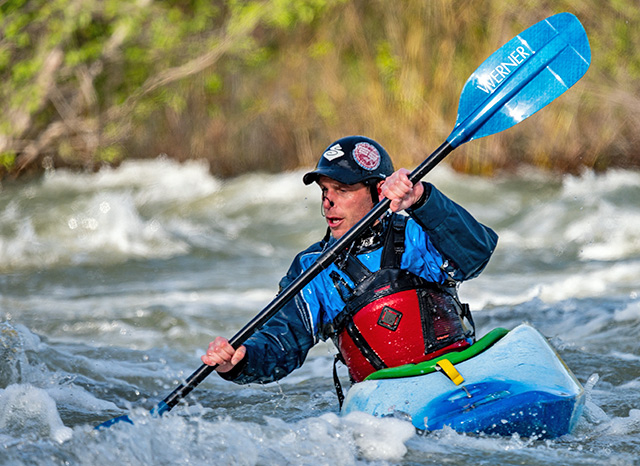Kayaking is a great way to get some exercise and enjoy the outdoors, but you might be wondering what muscle groups kayaking works to improve.
In this article, I’ll explain which muscle groups will benefit from recreational kayaking and how you can keep them healthy.
Kayaking is more than just a good workout for your arms and back! In fact, kayaking is one of the greatest full-body workouts you can ever do!
Kayaking will help to strengthen and tone just about every major muscle group in your body, but many new kayakers don’t find this out until they try it for the first time and get sore in places they did not expect.
There are not many other sports that target as many muscle groups as kayaking does. An intense kayaking session will work your legs, core, back and arms while also improving your cardio health.
See pathandpaddle.com for more kayaking information.
So let’s talk about which specific muscles kayaking works:
Back
This may be obvious because you are using your back muscles to row, and you can be sure that your back will benefit and get stronger from kayaking!
Lats
Your Lats are the largest muscle group in your back, and they get a great workout because they contract after each forward stroke. They pull power from the lower body and help you when you pull the arm back and inwards towards your body. The Lat best training exercises to prepare you for kayaking include rowing, pull-ups, chin-ups, rows and lat pulldowns.
Rhomboid
Rhomboid muscles help pull your shoulder blades back to the middle of your spine at the end of each paddle stroke. The Rhomboid muscles are beneficial for good posture, and they should be stretched before and after your kayaking trip.
Traps
Trap muscles are located in your middle back, and they are used to provide motion to your neck and spine. They are sometimes called the “shrug” muscle because they also help move your shoulder blades up and down. It is a good idea to train your traps in your workout routine before hitting the water in your kayak. This is because kayakers tend to use this muscle group intensely.
 kayaker in action
kayaker in action Shoulders
You’re going to use your shoulders A LOT during kayaking. In fact, kayakers report injuries in the shoulders more than anywhere else when kayaking. Why are the shoulders impacted the most? With every forward stroke, the rear of the shoulder is used to help pull the paddle towards the body. This can cause the rear deltoids to overdevelop and cause a muscular imbalance.
This is why it is so important to stretch and train the shoulders properly focusing on the rear and forward deltoids. You can also train the rotator cuff using light dumbbells next time you hit the gym.
Biceps & Triceps
Yes, even your biceps and triceps will strengthen and tone as you paddle. With each stroke, the biceps and triceps work together providing a balanced workout for both muscle groups. If you get out in your kayak often enough, your friends and family will probably notice those new guns!
Grip
Kayaking is one of the best ways to help you build grip strength. However, it is important to relax your grip if you are paddling for a long time. If you grip too tightly for too long, you can cause hand injuries.
Chest
Your chest muscles help stabilize your paddling motion which gives you the same benefit as using a cable rowing machine at the gym. Isn’t it great to know that when you are rowing, you are building up your chest muscles at the same time as your biceps and triceps?
Core
Your core is the center that connects your upper body to the kayak. When you are paddling, your core anchors you as your abdominals and obliques move your trunk from side to side. This is your powerhouse! Remember that power comes from the core, not just the arms!
Hips & Legs
Ok, this isn’t cycling, but your legs and hips will still be working hard to help your body stabilize with each paddling stroke. As you improve your kayaking skills, you will also find ways to use your legs to help with turning and bracing.
Heart
Your heart will show you some love while you are paddling! Did you know that just one hour of kayaking may burn up to 500 calories? Kayaking is one of the few sports that will help you achieve this by using your upper body rather than your lower body.
Conclusion
So next time you're looking for a full-body workout, hop in a kayak and put all of those muscles to work. You will also eliminate stress and sleep better that evening!
Related Pages
- Fitness Components for Paddlers
- Fitness Testing for Paddle Sports
- Fitness for Paddlers
- Anthropometry for paddle sports
- Paddler Polls


 Current Events
Current Events